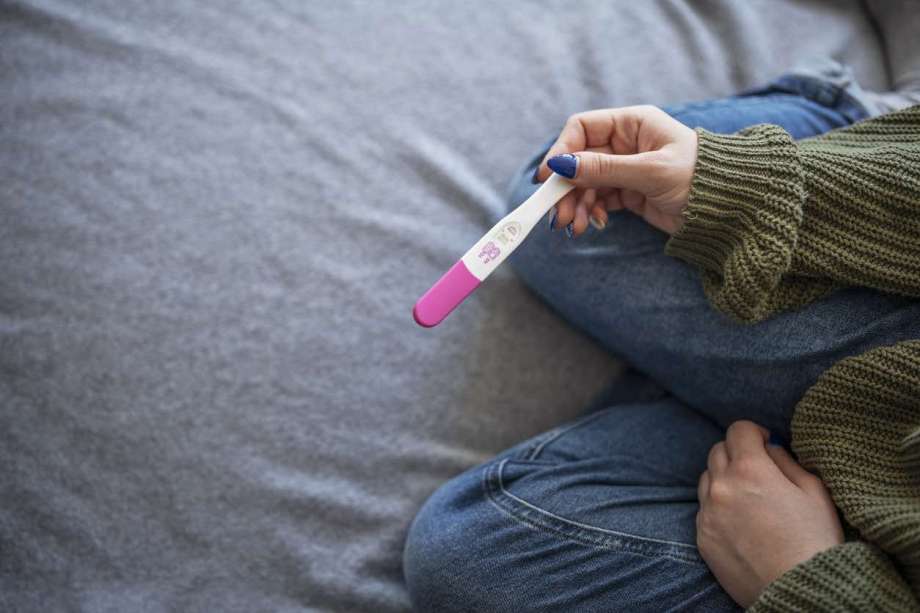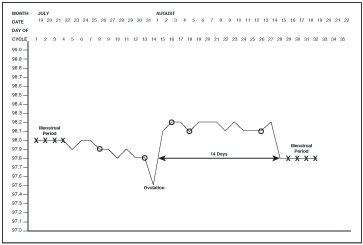How to Get Pregnant

Conceiving a Baby: Timing Is Everything
There is a fairly narrow window of time each month during which the sperm can fertilize the egg. After the egg is released by the ovary and begins its journey down the fallopian tube toward the uterus, it will live for only about 24 hours. If it isn't fertilized by a sperm in that time, the opportunity for pregnancy is lost until the next month, when the process begins again. That's why knowing when your egg is released each month is so important if you want to become pregnant.
Of course, some women get pregnant the very first time they try without ever even thinking about their "fertile days." But others have a tougher time getting the egg and the sperm to make a match. If you don't conceive exactly when you want to, don't get discouraged. It often takes several months to a year for a perfectly fertile couple to conceive a child. But to help the process along, here are a few tips to boost the odds of conceiving sooner rather than later.
Because the egg will live for only 24 hours, you might think that you have to have intercourse on that exact day to conceive a child, but Nature gives you a little break here. Sperm can live in the reproductive tract of the woman for about 72 hours. This means that if you have sex on day 11 of your cycle and ovulate on day 14, that sperm still has a chance to fertilize that egg.
You can track your menstrual period each month to figure out when your body is ovulating—the time period when the ovary releases the egg for fertilization. Tracking your period is the best way to zero in on your most fertile days. You'll need a thermometer and a calendar or a chart like the one that follows, or you can buy a basal body temperature (BBT) thermometer at any pharmacy, which might come with a BBT calendar chart. Either way, put the thermometer and calendar right next to your bed where you can reach them. Starting on the first day of your monthly period, take your temperature daily before getting out of bed in the morning, and record the result on the calendar. Also record the days of menstruation and the days you have sex with your partner. Do this every day throughout the month. About 14 days after the first day of your period, you should begin ovulating (not all women are "regular," and ovulation can occur before or after this date). Shortly after this happens, the body-at-rest temperature rises one-half to one full degree and remains elevated until the end of that cycle.
During the first month of tracking you won't be able to identify your most fertile days because the rise in temperature occurs after ovulation—when conception is very unlikely or even impossible. But after you've charted the information you can look back on the month and pinpoint the day your temperature spiked. Intercourse for the purpose of conception should take place one or two days before the rise in temperature. (You might notice during this fertile time a slight drop in body temperature.)
 Sample Basal Body Temperature (BBT) chart. Use this chart to track your body temperature for an entire month. A rise in temperature indicates ovulation. The most fertile period is one or two days before this spike. |
If you don't notice any sustained temperature rise during your monthly cycle, you might not be ovulating (even though you get your period). This is something your doctor should know about; there are medications that can increase the likelihood of successful ovulation.
The BBT is not foolproof. It is influenced by many factors, including medication, alcohol, degree of physical activity, and illness. Try to keep track of these things on your BBT chart as well; after about three months, you should be able to identify general patterns.
Hey Mom!
An ovulation predictor kit, available in pharmacies, is an easier (but more expensive) option to tracking your basal body temperature.
To maximize your chances of conception, you should have intercourse before your anticipated rise in body temperature. After ovulation occurs and your temperature has risen, it is too late for a sperm to fertilize the egg. That's because after ovulation the mucus thickens to block the sperm, and the entrance to the cervix grows firmer, preventing sperm from entering.
Time intercourse for every other day for two to four days in this fertile period. Intercourse every other day is recommended rather than daily intercourse because ejaculating too often can lower the sperm count. One ejaculation from a fertile man releases more than 20 million sperm—this is plenty to do the job until the next group arrives 48 hours later.
After intercourse, relax and lie still. It takes sperm about 20 minutes to work their way through the cervical mucus and up to the fallopian tubes. Lying down during this time will reduce the risk of sperm leakage from the vagina.